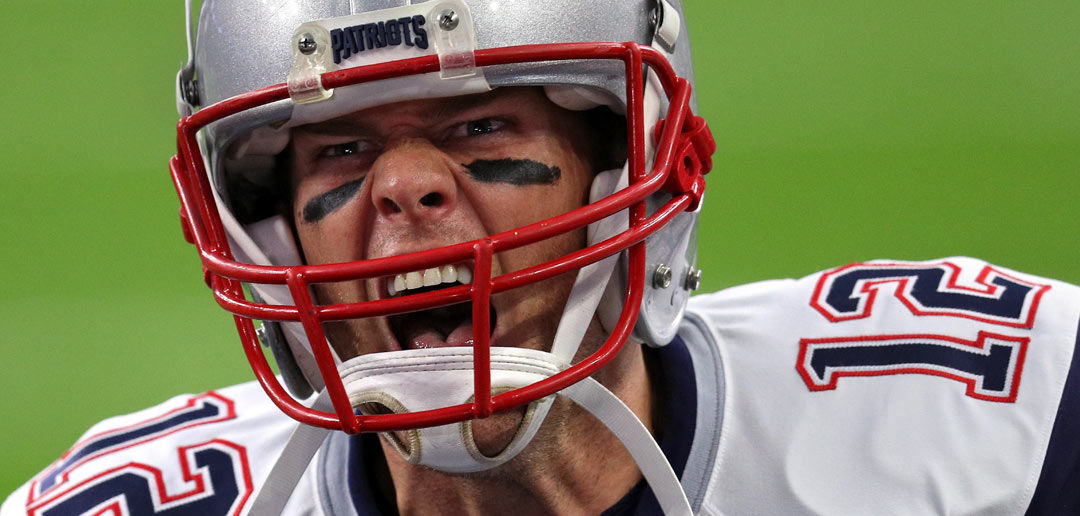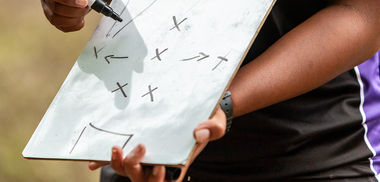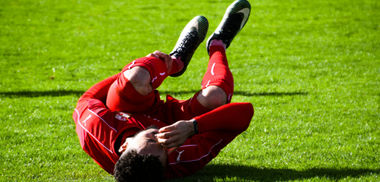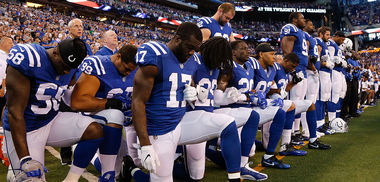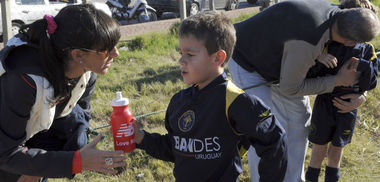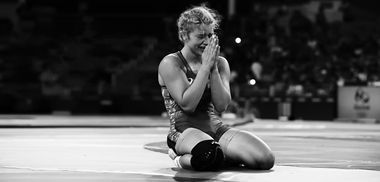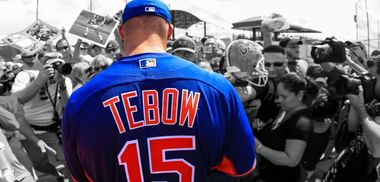The scouts snickered.
They looked at the time again. To this day the 5.28 second 40 yard dash time is one of the slowest for quarterbacks in the history of the NFL combine. His 24.5 inch vertical leap didn’t have them lining up at his door either. He had been a good, but not an outstanding college quarterback, and as far as statistics went, he was far from a sure thing. The New England Patriots used the 199th pick in the NFL draft to select him in the 6th round of the 2000 NFL draft.
The quarterback’s name was Tom Brady.
Five Super Bowl championships, four Super Bowl MVP awards, two NFL MVPs, and numerous regular season and playoff records later, Brady is arguably the greatest football player of all time. So how did all the experts select 198 players ahead of him in the NFL draft? And why are we writing about Tom Brady?
Get our "Top Articles" sent to your inbox weekly.
Because we are in such a hurry to turn our kid’s sporting experiences into adult ones, to select “talent” as soon as possible, and to focus on statistics instead of other characteristics that are harder to measure. Our system is set up to weed out kids who are late bloomers and have neither the time, the money, or the desire to go all in on a sport in elementary school.
Our system is set up to find the talent that shouts, but not the talent that whispers.
The Process of Development
In our hyper-competitive youth sports world, we are racing to the bottom in a huge hurry to accelerate development. We are pushing single-sport specialization younger and younger. We are having tryouts, making cuts, and forming travel teams while children are still in elementary school.
Parents are afraid that if they don’t hire a private trainer for their 8-year-old, she will be pushed out of the system. We are pouring the training volume of a fifteen-year-old into a nine-year-old, and then proclaiming “look how good he is” and splattering the video all over YouTube.
We are creating a youth sports environment that only works for those with the most money, the most time, and often, the well-intentioned parents with the greatest willingness to look the other way and ignore not only all the science and research, but that gut-feeling that says “I don’t think this is working for my kid, but I am going to do it anyway because I am scared if I don’t, my kid will miss out.”
We are throwing dozens of eggs against a wall and hoping one or two won’t crack, and with little regard for those eggs that do break.
What We See Early Is Rarely the Truth
We are great at selecting the talent that shouts.
These are the kids who are usually born within a few months of the arbitrary calendar cutoff, known as the relative age effect. Study after study has shown the bias toward older birth dates in sports (those born in the first half of the sporting calendar year.) Another study shows how the relative age bias is increasing.
Programs select those who have specialized first. We grab the biggest, fastest and strongest, and select based on output, instead of looking at the input that created said output.
As author Rasmus Ankerson says in the video below, we are ignoring the talent that whispers. We are cutting the late bloomer before she has a chance to grow. We are stifling the love of the game for the multi-sport child who is searching for a sport that he loves the most. We are so results driven that if a kid cannot help us win today, we don’t have time to wait for tomorrow.
Why? If NFL scouts cannot pick a Tom Brady at age 23, why do we deify Pop Warner football players, or let others rot on the bench?
If Lorenzo Cain can become an MLB playoff MVP and World Series champion by playing baseball for the first time as a high school sophomore, why are moms and dads led to believe that if their son wants to try baseball for the first time at age 9, it’s too late?
If NHL scouts and coaches still could not peg future Hall of Famer, MVP and scoring champ Martin St Louis at age 24, why are we so worried about who makes the PeeWee AAA team?
If swimmer Conor Dwyer can win gold medals in swimming at both the 2012 and 2016 Olympics, and he was a college walk-on who did not start swimming full time until his senior year of high school, why are some youth swim programs telling kids to go all in by age 10 or it’s too late?
Sure, Dwyer, St. Louis, Brady and Cain are outliers, similar to the “talent that shouts” outlier examples of Tiger Woods or the Williams sisters in tennis. Yet the research is clear on one thing: if you want to have the best chance of identifying long-term potential, be patient.
As world-renowned sport scientist and researcher Jean Cote states, “long-term prediction of talented athletes is unreliable, especially when detection of talent is attempted during the prepubertal or pubertal growth periods.”
Start Valuing a Different List of Expectations
Every athlete has his or her own path.
Some show aptitude from day one and others burst upon the scene later. Some are the first to grow, and dominate early on through sheer physical prowess, while others grow last and develop grit and resilience to go with a good sporting brain and skill set. If you are developing athletes simply to win the 12-year-old championship, then, by all means, force them to do as much as possible as soon as possible. They will likely win now, but not be prepared to win long term.
But if you can put aside the fear, and take the long view, you have a much better chance of helping your own children, and any athletes you coach, find their greatness, regardless of whether their talent whispers or shouts.
It is time for parents, and coaches, to not only ask, but demand our sporting institutions do the following:
Train as many kids as possible, for as long as possible, in the best environment possible (see Johan Fallby interview here).
Develop all kids, not just the ones who seem the best right now.
Recognize that some kids play simply for the sake of playing, with no long term focus on performance.
Instill a love of the game, so that kids want to play more and get extra time on task.
Create pathways for performance-focused and participation-focused children.
Train all our coaches, even if this means fewer volunteers and more paid AND prepared men and women (a soon to be released study by Dr. Mark Robinson of University of Delaware demonstrates paid, trained coaches increase participation and retention).
Demand continuing education of our coaches and anyone working with kids, not just on Xs and Os, but on motivation and communication.
Start treating coaches like valued educators and provide them the respect, trust, and necessary tools to do their job the right way.
We also must start teaching and promoting other qualities in young athletes other than those easily measured by a stopwatch or tape measure, qualities that allow for a bigger upside as training volume increases:
- Are they coachable/do they have a teachable spirit?
- Do they work hard?
- Do they have a growth mindset?
- Are they focused on what they can give, rather than what they can get?
- Do they work well with others?
- Do they deal well with adversity?
- Are they a good decision maker?
- Are they accountable?
Parents and coaches, please let our kids play lots of sports until they find one that is a great fit.
Please understand the effects of Relative Age and whether that is advantaging or disadvantaging your young athletes.
Please be patient with development.
Please look beyond current output by gauging the level of current input, and observing qualities that will allow for additional input when it really matters.
Please remember Tom Brady, the less than impressive NFL combine performer who became the best of all time.
In other words, forget for a moment the talent that shouts. In every town, in every age, there is an athlete just waiting to be found if we give him or her the chance.
Look for the talent that whispers.
